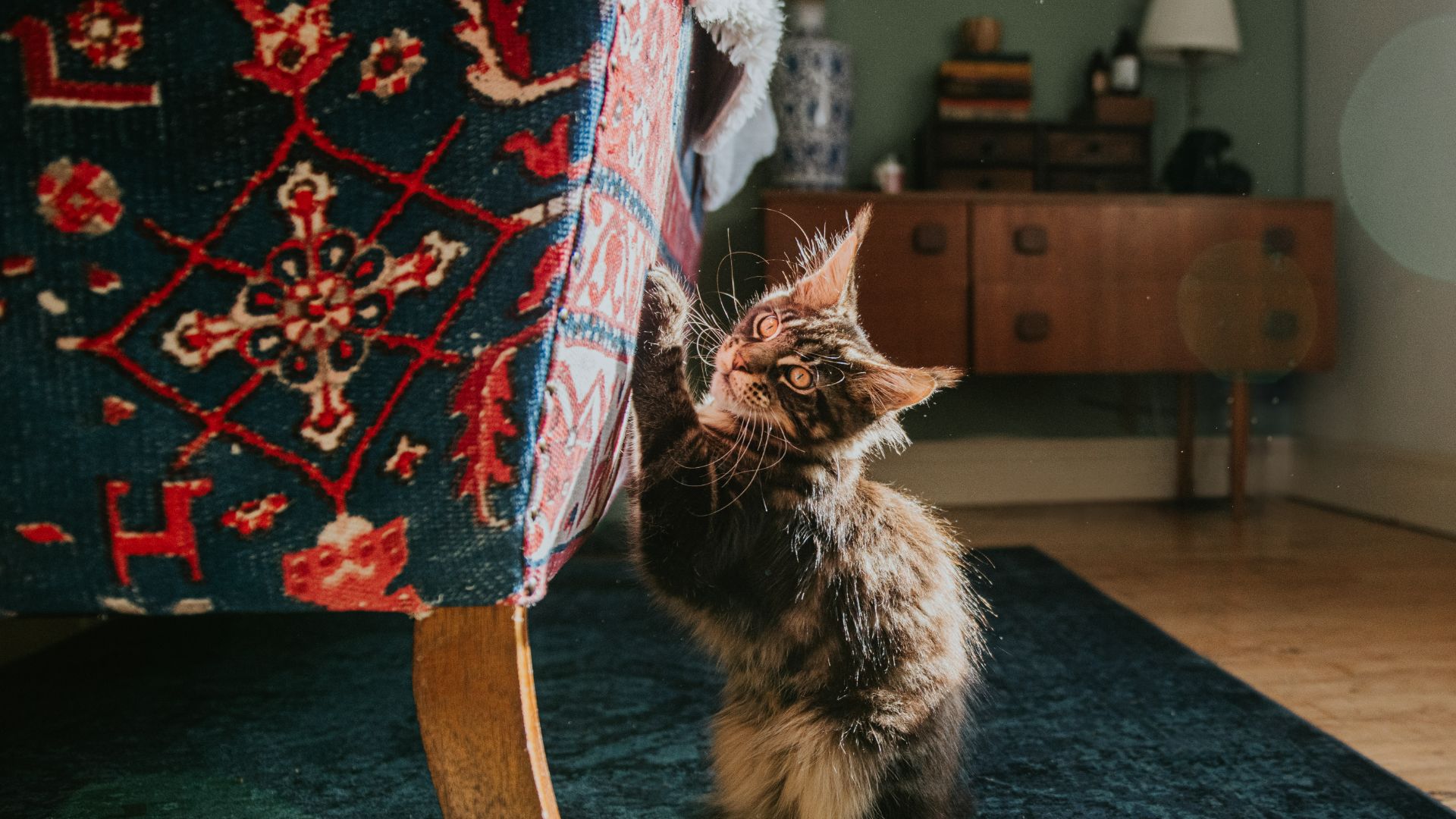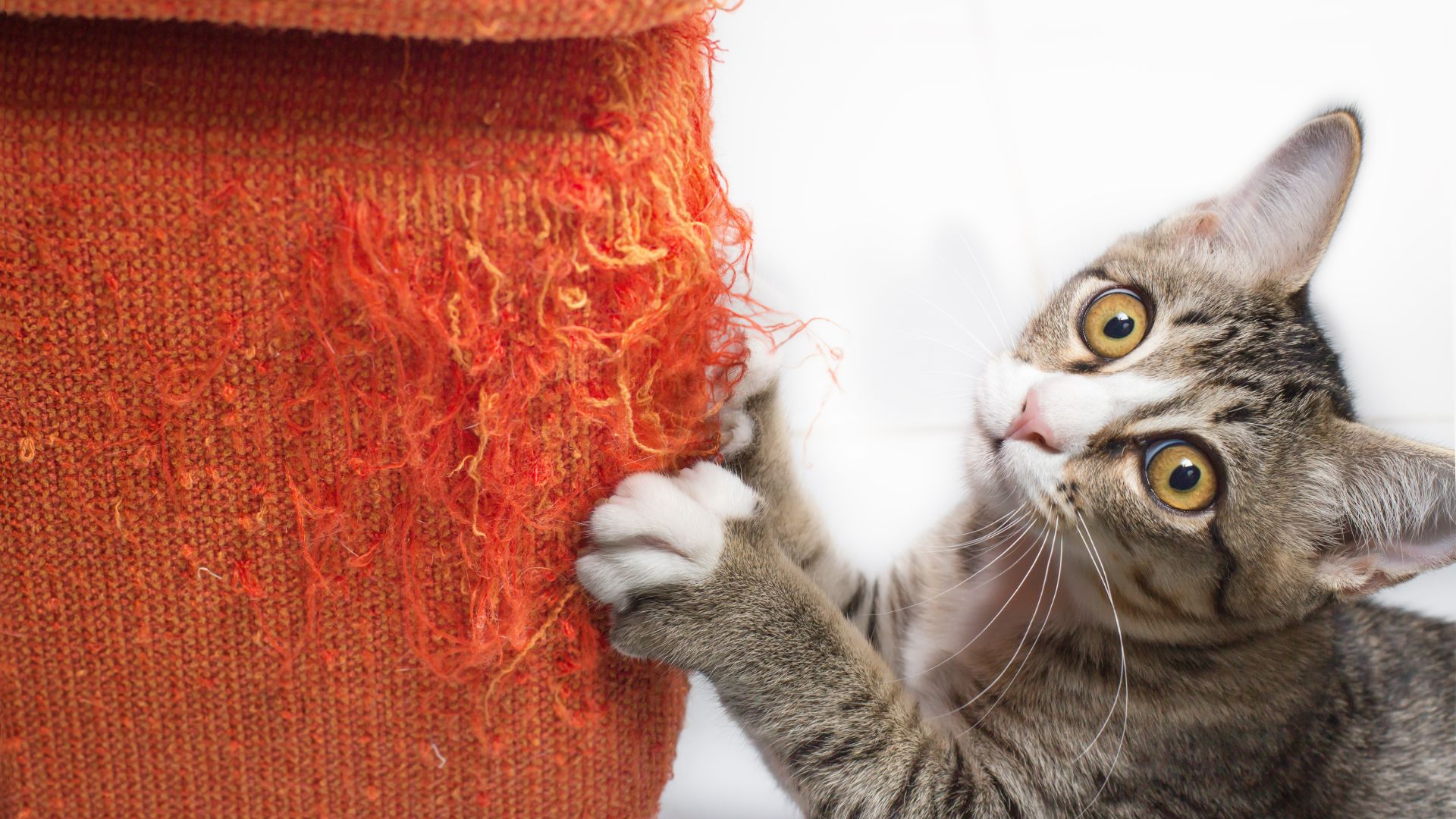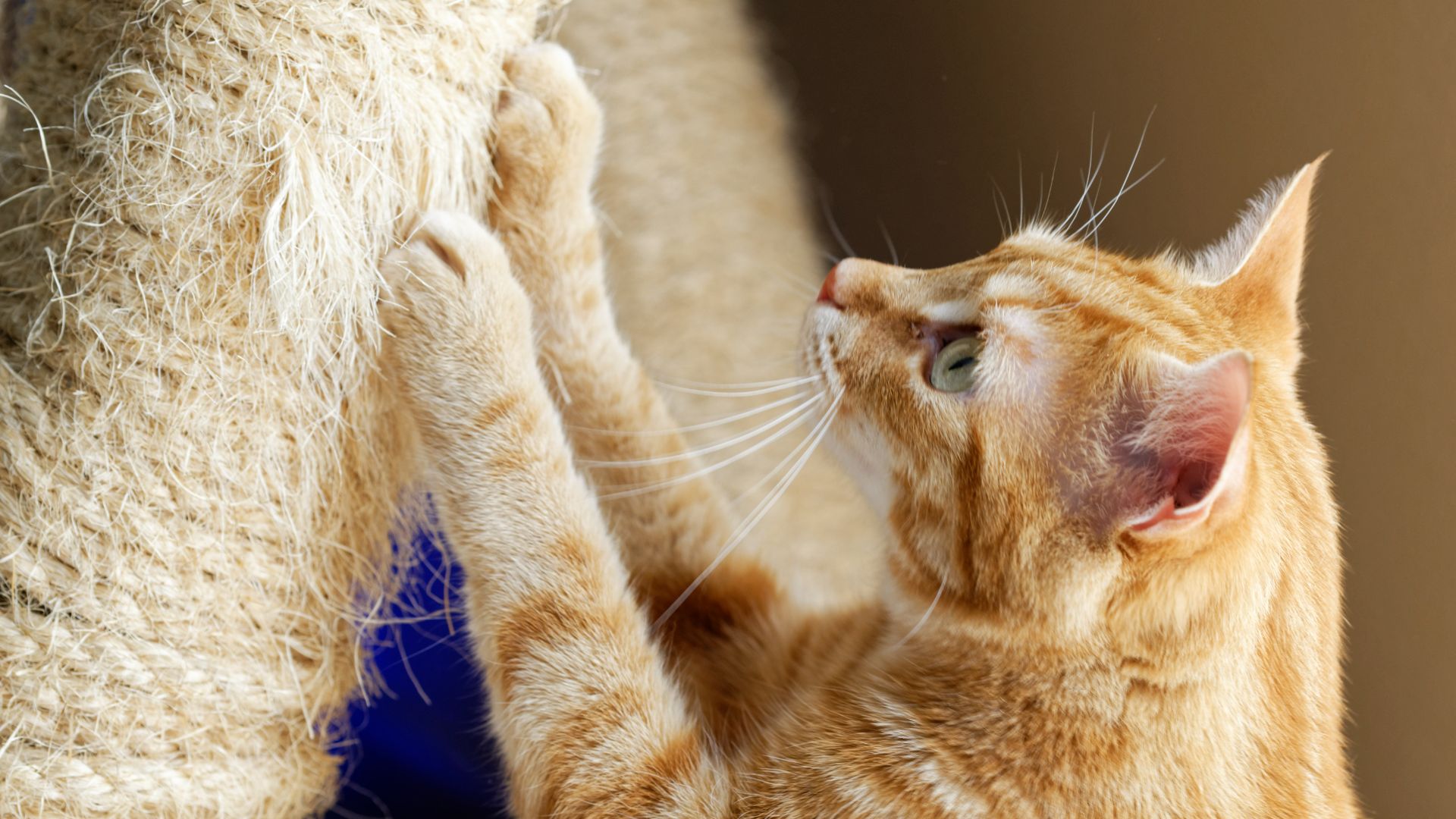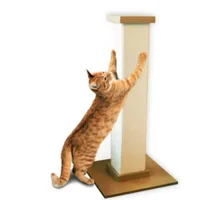How to stop cats from scratching the furniture: A vet’s guide
Want to know how to stop cats from scratching the furniture? Here are our vet's top tips

Scratching is a common behavior in cats, but knowing how to stop cats from scratching the furniture is very important.
Furniture scratching is very common and can be frustrating for pet parents. Take comfort in knowing that this is very normal cat behavior and can be managed.
Cat scratching can occur for several different reasons. First, it's a way to sharpen their claws. It also helps to shed the outer layer and keep the claws healthy. Cat scratching is also used as communication between cats. Pheromones from their paws are left behind when they scratch. This sends a scent signal to other cats.
Since this is a normal cat behavior, it's very important that you don't prevent your cat from scratching. Instead, you can do things like providing them a place where they can scratch, like one of the best cat scratching posts or the best cat trees.
Keep reading to find even more helpful tips to keep your cat's claws off your furniture.
Why is my cat scratching the furniture?
The first step in stopping your cat from scratching the furniture is to work out why they are doing it. There are a number of possible reasons, and which one it is might depend on whether your cat is new, whether the sofa is new, whether the behavior is new, or whether something else has changed in the house.
Some possible reasons why cats scratch the sofa include:
Get the best advice, tips and top tech for your beloved Pets
- No suitable alternative, such as a scratching post
- Not enough scratching posts
- The scratching post is the wrong size or type
- The scratching post is in the wrong place to signal to other cats
- Stress from other cats or household changes
- New sofa causing environmental stress
SmartCat Pioneer Pet Ultimate Scratching Post | Amazon
This was our top pick for cat scratching posts. It's sturdy, easy to assemble and stands at 32-inches tall, giving your cat plenty of space and stretch and scratch.
From reading this list, you might already know which of these is upsetting your cat. If you don’t, talk to your vet or to a feline behaviorist about your set-up to see if they have any ideas.
What kind of scratching post is best?
The most common reasons why a cat might be scratching your sofa rather than their scratching post is simply that they don’t like the post, it’s not in the right place, or they can’t get to it easily.
When buying a scratching post for your cat, you need one that’s tall enough for your cat to stand and stretch when scratching – about 35 inches is the minimum for an average-sized cat, but large cat breeds may need even taller.
It should also be sturdy – a wobbly post will make your cat worried about using it. A cat tree is a favorite option for many cats. Whilst horizontal pads may be preferred by kittens and some adult cats, most cats prefer a post, according to the Journal of Feline Medicine and Surgery.
The various materials for scratching posts can get confusing. Studies have suggested that rope (sisal) appears to be favored by most cats, but older cats may prefer carpet. If in doubt, get several and see which your pet prefers – this is one of the best ways to reduce inappropriate scratching in the home. You can even try making your own DIY cat scratching posts.

Now think about where it’s placed. Since your cat is leaving a visual and scent signal for other cats, they need the post to be in a strategically useful position, such as near sleeping places, doors, and windows. If it’s hidden away at the top of the house where nobody can see it, it’s likely they will use something that’s more visible. If in doubt, place the post near where they have been scratching already or spread several around.
Lastly, they may need some encouragement to use the post. Don’t pick their paw up and move it to the post – this can cause aversion. To encourage your cat, use catnip or special pheromones such as valerian for cats.
How to deal with household stress
On the whole, cats are less likely to scratch inappropriately as they age. However, if they have never been much of a scratcher but have just started, think about whether stress could be a factor.
Cats who are stressed by changes in their environment may urinate in unusual places, start spraying, or scratch furniture as a way of re-establishing their territory. Not sure what could be upsetting your cat? Here are some possibilities:
- New pet or family member in the house
- New cat in the neighborhood – even if your cat doesn’t go out, they can bully them through the windows
- New furniture or furniture has been moved
- Building work, fireworks, or other unexpected noises
You may be able to remove the source of stress, but you may also have to help your cat learn to manage their anxiety. To help your cat deal with stress, you may also benefit from speaking to your vet.
They may suggest using a special diet or dietary supplements to help your cat, and may also recommend other changes, including hiding places, a ‘safe space’, and feeding regimes. If your vet is stumped, a feline behaviorist may be able to come to the home and make some recommendations.
Reward vs punishment

It can be frustrating when your cat acts up, but punishment for inappropriate scratching has no effect on the problem. On the other hand, rewarding your cat for using the post correctly has been shown to increase the likelihood of them using it. To learn more, read our feature on how to discipline a cat and encourage good behavior.
Read next: Why does my cat scratch the wall?
Edited by Georgia Guerin and Megan Milstead.
Last updated in May 2025 by Alexis De Leaver.

Our staff writer, Alexis, is a digital content specialist and passionate pet advocate with a background in lifestyle journalism. Raised in a lively home filled with cats, dogs, and fish, she channels her lifelong love for animals into creating helpful, research-driven content for pet parents.
She collaborates with veterinary professionals to ensure accuracy and is currently pursuing additional pet care certifications.
A graduate of Bowling Green State University, Alexis has contributed to major UK and US publications, including Daily Mail, Space.com, and Black Women Rising Magazine.
After graduating as a vet from the University of Nottingham in 2016, Dr. Joanna Woodnutt went on to practice companion animal medicine in the Midlands. She quickly developed a love of consulting and helping clients with medical problems such as dermatology, behavior and nutrition - anything that involved helping clients understand their pets better.
Jo started writing about pet health in 2017, realizing that it meant she could help even more pet parents. Since then, she has written for countless online and print publications and is a regular contributor for Edition Dog Magazine. Jo is the director of The Veterinary Content Company, which she founded in 2020. She is also the founder of Petlearnia, a platform that provides pet e-learning courses for pet parents.
Jo now lives in the Channel Islands with her husband Ian and terrier Pixie.
- Alexis De LeaverDigital & Syndication Staff Writer


